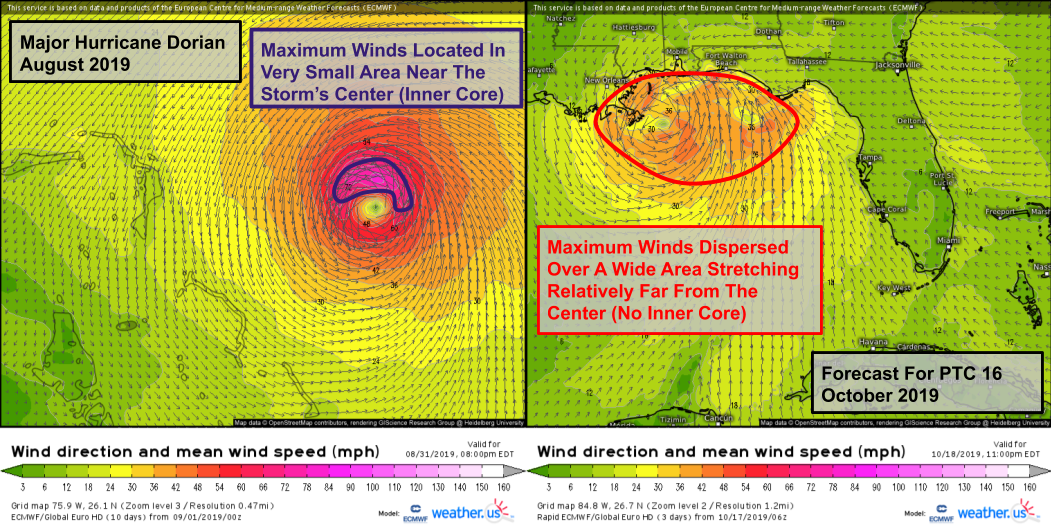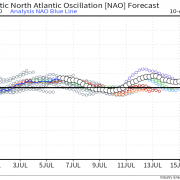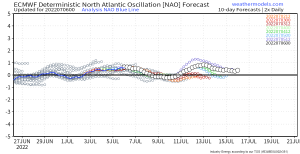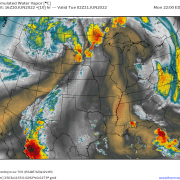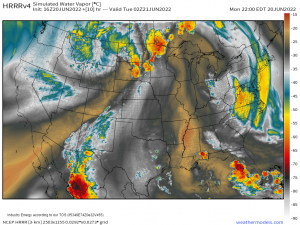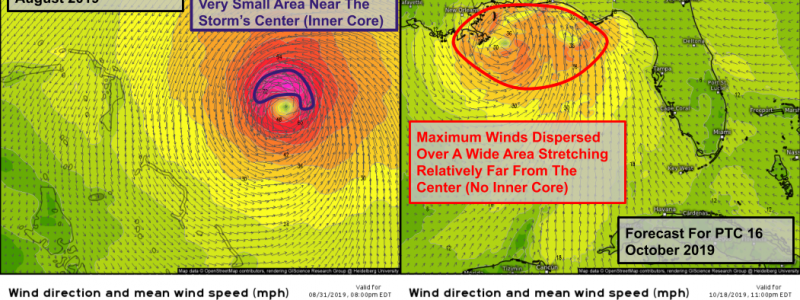
What’s The Difference Between A Tropical And Subtropical Storm?
Hello everyone!
With the potential for a tropical or subtropical storm to develop in the Gulf of Mexico over the next couple days, I figured now would be a good time to review the difference between a tropical and subtropical storm. I’ll use both current forecast data for PTC 16 as well as recent historical examples in the hopes that this can be an “evergreen” post that is relevant any time you might want to brush up on your knowledge about the atmosphere. If you’re looking for forecast information specific to PTC 16, please refer to this morning’s earlier blog post.
Technically, the defining feature of a tropical cyclone is that it derives its energy purely from the latent heat release that happens in thunderstorms when water vapor condenses into raindrops. This is a different process from extratropical cyclones (like nor’easters) which derive their energy from the collision of warm and cold airmasses. Subtropical storms blend both these energy sources, which means they don’t quite fit either category.
Practically speaking, subtropical storms are different from tropical storms in two key ways: their thunderstorms are located farther from the center (and are usually distributed asymmetrically), and they have a broader wind field that lacks a well-defined inner core.
The above comparison of Subtropical Storm Alberto from May 2018 and Hurricane Dorian from August 2019 highlights the key difference in thunderstorm distribution: tropical storms have (nearly) symmetric clusters of thunderstorms located very close to the center of the storm while subtropical storms have most of their thunderstorms displaced asymmetrically away from the center.
Some subtropical storms end up getting their thunderstorms organized symmetrically, but as long as they remain far from the center (generally >100 miles), they’re still considered subtropical. Similarly, some tropical cyclones can end up lopsided, but as long as they have some strong thunderstorms near the center, they’re still considered tropical.
This comparison between Hurricane Dorian and the forecast for PTC 16 highlights the key difference in wind distribution: tropical cyclones have their maximum sustained winds consolidated in a small region near the storm’s center while subtropical cyclones have much broader circulations without a well-defined inner core.
When tropical cyclones are first forming, their wind field might look a lot like that of a subtropical cyclone. It takes some time for a storm to consolidate enough thunderstorms near its center to support a distinct inner core. That being said, developing systems aren’t considered subtropical because despite their broad wind field, they’re being supported by latent heat instead of clashing airmasses.
While heavy rain and strong winds can impact locations far from the center of either a subtropical or tropical cyclone, generally the center of a tropical cyclone will have the system’s worst weather. In the case of a subtropical storm, the weather near the storm’s center may actually be fairly tame. Often the worst conditions these storms have to offer are dozens or even hundreds of miles from the center of circulation.
-Jack

